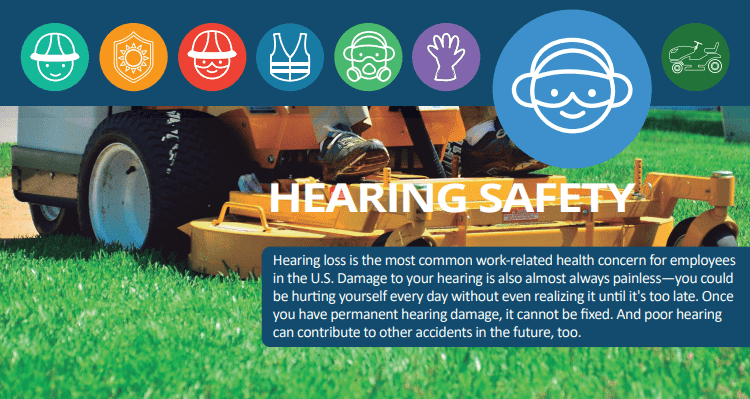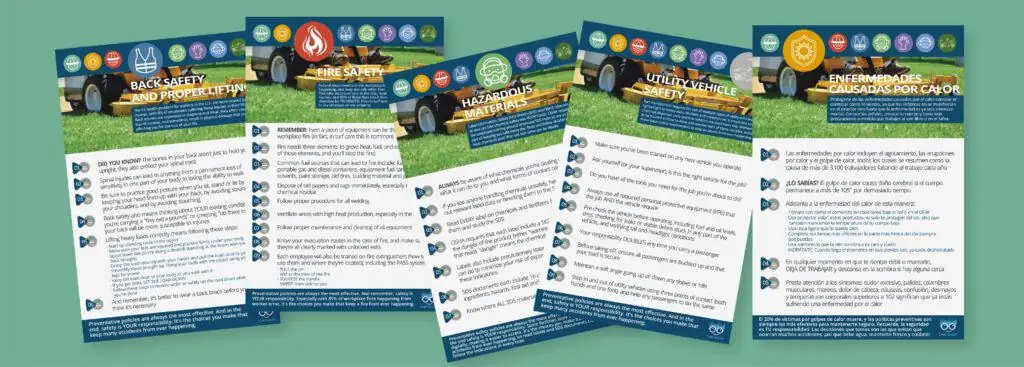
Hearing loss is the most common work-related health problem for employees in the United States. And not only is it devastating, but it is also almost always painless; you could be sustaining serious damage to your hearing every day without even realizing it.
Once your hearing is permanently damaged, there is nothing you can do to restore it naturally.
Permanent hearing damage cannot be fixed. And poor hearing can contribute to other accidents in the future. So, how can you protect yourself from hearing damage? How loud is “too loud,” and what signs of hearing damage should you always be looking out for?
We’ll walk you through everything you need to know about hearing loss prevention. It’s up to you to prevent permanent hearing loss—your future self will thank you.
When equipment is too loud
Sound is measured in decibels (dB), a logarithmic unit that describes the intensity of a sound wave. Hearing loss begins at 85 decibels and up. Because decibels are logarithmic, every increase of four decibels past the 85 decibel-threshold doubles the amount of hearing damage you can expect to sustain.
Both OSHA and the National Institute for Occupational Safety and Health (NIOSH) recommend that noise levels be kept below 85 decibels per an 8-hour time-weighted average. However, you will still be expected to use equipment louder than this threshold. A simple residential lawn mower, for example, can reach up to 105 decibels of noise.
Making sure all equipment you use on the turf and in the shop is in working order is another way to prevent loud noise exposure. After all, faulty equipment will usually make more noise than equipment that’s in good working order.
Be sure to always follow time limits for hearing-hazardous jobs. If you must be exposed to loud equipment, it is important to work quickly and efficiently and to use all recommended personal protective equipment.
Personal Protective Equipment (PPE)
While the best way to prevent hearing damage is to eliminate the source of the noise, this isn’t always an option for turf management professionals. In these cases, personal protective equipment, or PPE, is your last layer of defense against hearing damage. Neither headphones nor hearing aids will protect your ears from harmful levels of noise. Therefore, it’s your responsibility to know which PPE to use in every situation and to always have the correct PPE on-hand.
Earmuffs offer the best hearing protection and can reduce noise by a maximum of 40 decibels. Earplugs are sometimes used under earmuffs; on their own, they can reduce noise around you by a maximum of 20 decibels. If need be, you can wear earplugs underneath your earmuffs to further protect your ears from damage.
Earplugs alone will be good enough to prevent hearing loss from lawnmowers, backhoes and belt sanders. Any equipment louder than 100 dB, such as a chainsaw or most shop equipment, requires the use of earmuffs. Using PPE is not optional, and for good reason. If you don’t have your personal protective equipment, even a one-hour period of exposure to loud equipment can cause lifelong damage.
Hearing damage and loss
Hearing damage is cumulative and can be tricky to detect before it’s too late. While you should always have your hearing checked regularly by your primary care practitioner during regular checkups, you should always be on the lookout for common symptoms of hearing loss. Early detection can save your hearing.
According to the CDC, some of the signs and symptoms of hearing damage include:
If you notice any of these symptoms, or if you notice your hearing diminishing over time, seek out an audiologist or another qualified doctor to test your hearing. Prevention and early detection are the first line of defense against permanent hearing damage.
Never be afraid to seek help if you feel something is amiss with your hearing. No one knows your body better than you do.
Takeaways
Permanent hearing loss or damage is a devastating side effect of working as a turf management professional. Thankfully, it’s a risk that is entirely preventable. By taking care around loud machinery, always using personal protective equipment and regularly monitoring your hearing, you can protect your hearing from extreme damage. Don’t wait until it’s too late. It’s the choices you make that keep accidents and possible hearing damage from ever happening.
